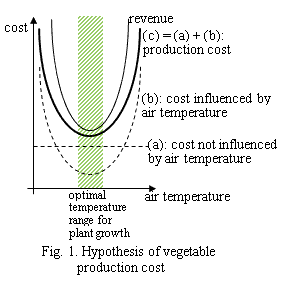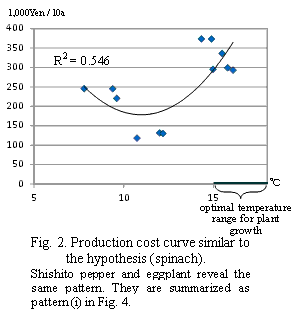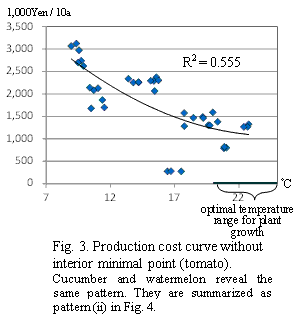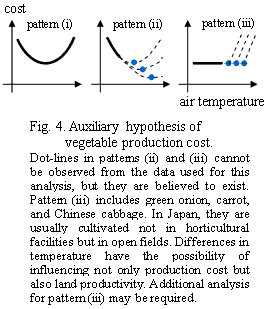A projection method to estimate global warming impacts on vegetable production
Description
Projecting future impacts of climate change is important in considering appropriate coping and adaptation measures. The importance of projections also applies to agriculture and food supply, and many have already been generated to predict future trends. However, most projections are limited to cereals with only a few studies focusing on vegetables.
One reason why vegetables are less focused on is that the number of items and varieties of vegetables are too many to develop respective crop models used for projections. Another reason is that vegetables are considered less important than cereals in terms of food security. However, there are some regions whose economies depend largely on vegetable production. For such regions, projecting climate change impacts on vegetable production is more important. Therefore, the purpose of this study is to consider a projection method for vegetables as an alternative to crop model.
There are some countries, including Japan, where vegetables are cultivated all year round, using both open fields and horticultural facilities like greenhouses, and following product standards. In such countries, production costs of vegetables grown during unfavorable seasons are likely to be higher than those grown during favorable seasons due to the use of adaptation technologies. Therefore, assuming that average air temperature during cultivation period is a representative index of meteorological condition, we hypothesized that production costs increase when the average temperatures of cultivation environments are higher or lower than the optimal temperature ranges, and that the costs make downward-convex curves (Fig. 1).
To investigate the hypothesis, regression analysis was applied to data on production costs and cultivation environments of 15 vegetable types in Japan. Regression analysis showed that: some items have relatively high determination coefficients and follow the convex curves of the hypothesis (Fig. 2); other items have relatively high determination coefficients but do not include the interior minimum points of the convex curves (Fig. 3); and others have low determination coefficients. These three patterns are summarized in Fig. 4.
Relatively high determination coefficients imply that vegetable cultivation at temperatures below or above optimal range has introduced some adaptation methods, which vary production cost. To ascertain the substance of adaptation methods, regression analysis between temperature and itemized production costs was employed. Results show that the cost of fertilizers, chemicals, energy and power, seedlings, and management are sensitive to temperature, and that they are thought to be closely related to adaptation methods. Of the vegetables whose curves have interior minimum points (Fig. 2), some have minimal cost points lower than optimal temperature ranges for plant growth. Investigation of itemized production cost data of the vegetables reveals that costs for quality preservation after harvesting, e.g., cleaning, shipping preparation, and packing costs, can reach high values even within optimal temperature ranges. This implies that temperature ranges optimal for plant growth are not necessarily optimal in terms of production cost.
The impact of temperature change on vegetable production due to climate change can be projected by measuring the change in production cost along the estimated production cost curve (Fig. 4). The data used for this analysis was derived from main production areas. If data can also be derived from small production areas whose temperatures are warmer, anticipated dot-lines in Fig. 4 can be estimated. In order to deal with many vegetables, this study adopted only average air temperature during cultivation period as the explaining variable, and did not distinguish varieties of a vegetable. Use of variables suitable for each vegetable and varietal analysis are expected to improve the statistical significance of the regression analysis.
Figure, table
- Affiliation
-
Japan International Research Center for Agricultural Sciences Social Sciences Division
- Classification
-
Administration B
- Program name
- Term of research
-
FY 2012 (FY 2010-FY 2014)
- Responsible researcher
-
Kobayashi Shintaro ( Social Sciences Division )
Furuya Jun ( Social Sciences Division )
MIERUKA ID: 001740Yamamoto Yukiyo ( Social Sciences Division )
- ほか
- Publication, etc.
-
Kobayashi, Furuya, Yamamoto, et al. (2013), Journal of the Japanese Agricultural Systems Society 29(1):11-22
- Japanese PDF
-
2012_02_A4_ja.pdf32.96 KB
- English PDF
-
2012_02_A4_en.pdf92.28 KB




